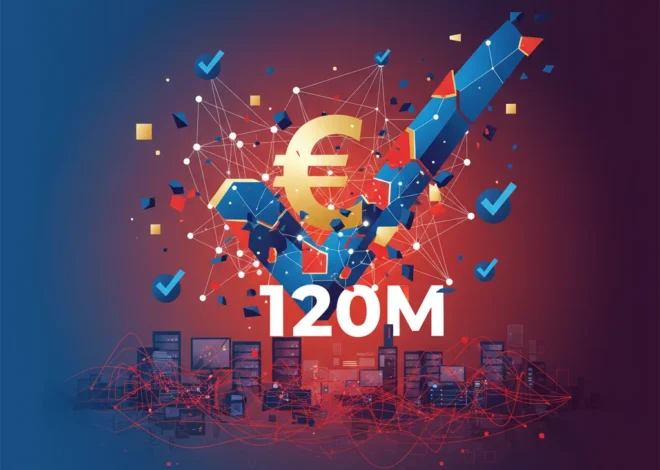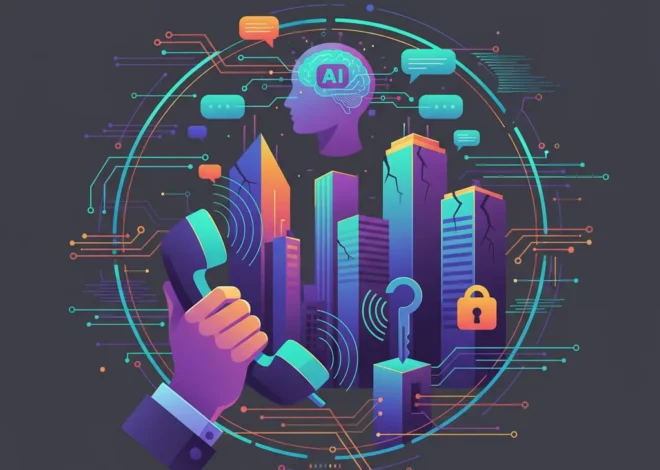
The Call is Coming From Inside the Cloud: Unmasking the New Wave of AI Voice Phishing
Imagine your phone rings. It’s your CEO, and her voice is frantic. “I need you to wire $50,000 to this new vendor immediately. It’s a top-secret M&A deal, and time is critical. Don’t talk to anyone about this.” You recognize her voice—the cadence, the slight rasp, the way she emphasizes certain words. It’s unquestionably her. So, you make the transfer.
A few hours later, you discover the company was never acquiring anyone. The call wasn’t from your CEO. It was from a scammer using a powerful new weapon: artificial intelligence to perfectly clone her voice in real time. You’ve just become a victim of the next evolution in cybercrime: AI-powered voice phishing, or “vishing.”
For years, we’ve been trained to be digital skeptics. We scrutinize emails for grammatical errors, hover over links to check their destination, and treat unsolicited attachments like digital venom. We built a collective “human firewall” against text-based scams. But what happens when the very thing we’re programmed to trust—the sound of a familiar human voice—is compromised? This is the new, terrifying frontier of cybersecurity, where the lines between human and machine, real and fake, are blurring at an alarming rate.
From Suspicious Emails to Deceptive Conversations
Traditional phishing relied on volume and a lack of user sophistication. Scammers would blast out millions of poorly crafted emails, hoping a small percentage of people would click. But as we got smarter, so did they. Spear-phishing emerged, targeting specific individuals with personalized information.
Voice, however, remained a high-trust medium. It’s immediate, personal, and carries emotional weight. Hearing a loved one in distress or a superior giving an urgent command triggers a primal, emotional response that often bypasses our rational filters. Scammers knew this, but manually impersonating someone was difficult and not scalable.
Enter generative AI. The same machine learning models that can write poetry, generate stunning images, and power complex software can now learn and replicate a person’s voice with chilling accuracy. As noted in a recent Financial Times report, scammers can create a convincing clone from just a few seconds of audio scraped from a social media video, a podcast appearance, or even a company’s earnings call (source). This isn’t a pre-recorded message; it’s real-time voice synthesis, allowing the scammer to have a live, interactive conversation with their target.
The Tech Behind the Threat: How AI Voice Cloning Works
This isn’t science fiction; it’s the result of rapid advancements in a few key areas of technology. For developers, entrepreneurs, and tech professionals, understanding the underlying stack is key to appreciating the threat and building defenses.
- Generative Adversarial Networks (GANs) & Transformers: These are the machine learning architectures at the heart of the revolution. They are trained on massive datasets of human speech to understand pitch, tone, accent, and inflection. One part of the network generates the voice, while another part critiques it, forcing it to become progressively more realistic.
- Cloud & SaaS Accessibility: Just a few years ago, this level of voice synthesis required a supercomputer. Today, thanks to the cloud, these powerful models are available as-a-service (SaaS). Dozens of startups offer AI voice generation APIs, and while most have ethical guidelines, malicious actors can exploit open-source models or less scrupulous services. This democratization of technology means a scammer no longer needs a PhD in AI, just a credit card.
- Automation at Scale: The combination of AI and automation allows cybercriminals to scale these highly personalized attacks. They can use software to identify targets, scrape voice samples, and even initiate calls. What was once a one-on-one con can now be deployed against thousands of targets simultaneously.
The barrier to entry for creating sophisticated, emotionally manipulative fraud has effectively collapsed. We’ve moved from an era of “Nigerian Prince” emails to one where you could receive a perfectly mimicked call from your parent asking for emergency funds.
Beyond Big Ben: How London Became the World's Unlikely Quant Trading Superpower
To understand the gravity of this shift, let’s compare traditional phishing with its AI-powered successor.
| Factor | Traditional Phishing (Email) | AI-Powered Vishing (Voice) |
|---|---|---|
| Medium | Text-based (email, SMS) | Audio-based (live phone call) |
| Believability | Low to Medium (often contains errors) | Extremely High (uses a trusted, familiar voice) |
| Psychological Impact | Relies on curiosity or manufactured urgency | Exploits deep emotional triggers (fear, authority, empathy) |
| Detection Method | Logical analysis (check sender, links, grammar) | Difficult; requires overriding emotional instinct |
| Scalability & Tech | High-volume, low-tech automation | Scalable via AI, SaaS, and cloud infrastructure |
The Human Firewall is Under Direct Assault
The true genius of AI vishing is that it doesn’t just hack computer systems; it hacks the human brain. These attacks are designed to short-circuit our rational thinking by dialing up the emotional pressure.
Consider the case reported by the FT, where a UK-based energy firm’s chief executive was duped into wiring €220,000 to a Hungarian supplier after a call from someone perfectly mimicking the voice of his German parent company’s CEO . The scam worked because it combined the authority of the CEO’s voice with a plausible, urgent request. The target’s critical thinking was overridden by the instinct to obey a superior.
This is social engineering supercharged by artificial intelligence. The attacker doesn’t need to break through a firewall with code; they can simply call an employee and ask for the keys, and the voice they use is the ultimate master key.
Building a 21st-Century Defense: A Guide for Everyone
Fighting back against AI-powered threats requires a multi-layered defense that combines technological solutions, procedural safeguards, and, most importantly, a new level of conscious skepticism. We can no longer “trust but verify”; we must “distrust until verified.”
For Individuals and Families:
- Establish a “Verbal Password”: Create a code word or phrase with close family members that would never be posted online. If you receive a frantic call asking for money, ask for the code word. A scammer won’t know it.
- Practice “Channel Switching”: If you get a suspicious voice call, hang up. Immediately contact the person through a different, trusted channel—like their known mobile number, a text message, or a video call—to verify the request.
- Resist the Urgency: Scammers thrive on pressure. Take a deep breath and slow down. A genuine emergency can wait five minutes for you to verify it.
For Businesses, Startups, and Entrepreneurs:
- Mandate Multi-Channel Verification for Transactions: Implement a strict policy that any request for a fund transfer, password change, or data access made via voice or email must be verified through a secondary, pre-established channel (e.g., an in-person confirmation or a message on a secure internal platform like Slack).
- Conduct Advanced Security Training: Your employees are your last line of defense. Training should now include simulations of AI vishing attacks. Make them aware that a familiar voice is no longer sufficient proof of identity. The cost of this training pales in comparison to a single fraudulent transfer.
- Leverage Defensive Technology: Invest in cybersecurity solutions that analyze call metadata and, increasingly, use AI to detect synthetic voices. The market for this type of defensive software is a huge area of innovation.
For Developers and Tech Professionals:
This is both a threat and a massive opportunity. The programming challenge of our time is to build systems that can differentiate between human-created and AI-generated content. This includes:
- Real-Time Audio Analysis: Developing algorithms that can detect the subtle, almost imperceptible artifacts left by AI voice synthesizers.
- Voice Biometrics & “Liveness” Detection: Creating systems that don’t just match a voiceprint but also perform a challenge-response test to ensure the speaker is a live human and not a real-time “deepfake audio” model.
- Secure Communication Protocols: Building end-to-end encrypted communication platforms with built-in identity verification that goes beyond a simple caller ID.
The Grokipedia Paradox: Why Elon Musk's 'Truth-Seeking' AI Is a Masterclass in Missing the Point
The Future is Heard, Not Seen
The rise of AI voice phishing marks a critical inflection point in our relationship with technology. It’s a stark reminder that every powerful tool for good can be repurposed for ill. The same artificial intelligence that can help a person who has lost their voice speak again can also be used to steal an identity and drain a bank account.
We are in a new arms race, one that pits generative AI against defensive AI, and human gullibility against human vigilance. Winning this race requires more than just better software or more complex firewalls. It requires a fundamental cultural shift—a move towards a healthy, proactive skepticism in our digital and now, our auditory lives. The next time you get an urgent call from a familiar voice, pause and ask yourself: “Is that really them, or is it just a very clever machine?” The answer could save you a fortune.

